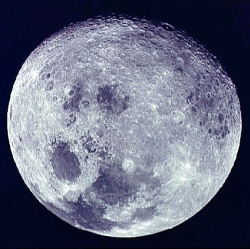
NASA’s Kepler mission did a great deal in discovering exoplanets, or planets existing outside of our solar system. To date, the mission has confirmed 167 planets. However, shouldn’t some of these planets also have moons? The answer, of course, is yes, but until now, we haven’t had any sightings of these exomoons.
Now, scientists from the University of Notre Dame believe they have found the first exomoon about 1,800 light years away from Earth.
We’ve discovered exoplanets by watching for light changes in stars: if a star brightens and darkens at regular intervals, it probably has a planet moving in front of it that is transiting the star. However, scientists discovered this exomoon, and the planet accompanying it, via something called gravitational microlensing. This means that a star seems brighter in intervals only when viewed at a certain angle from Earth. This happens when a star sits behind a planet and its light is bent by that planet’s gravity. After reviewing data from a series of telescopes, the Notre Dame team discovered this happening around a specific star, suggesting that a large object, followed by a smaller one, passed in front of that star. Scientists believe that second smaller object is an exomoon.
Another interesting thing about the exomoon is that its planet does not seem to be actually orbiting a star itself. Scientists believe both the planet and exomoon may have been kicked out of its system for getting too close to its star. The exomoon might have even been a planet, as its mass is large: about half that of Earth’s.
